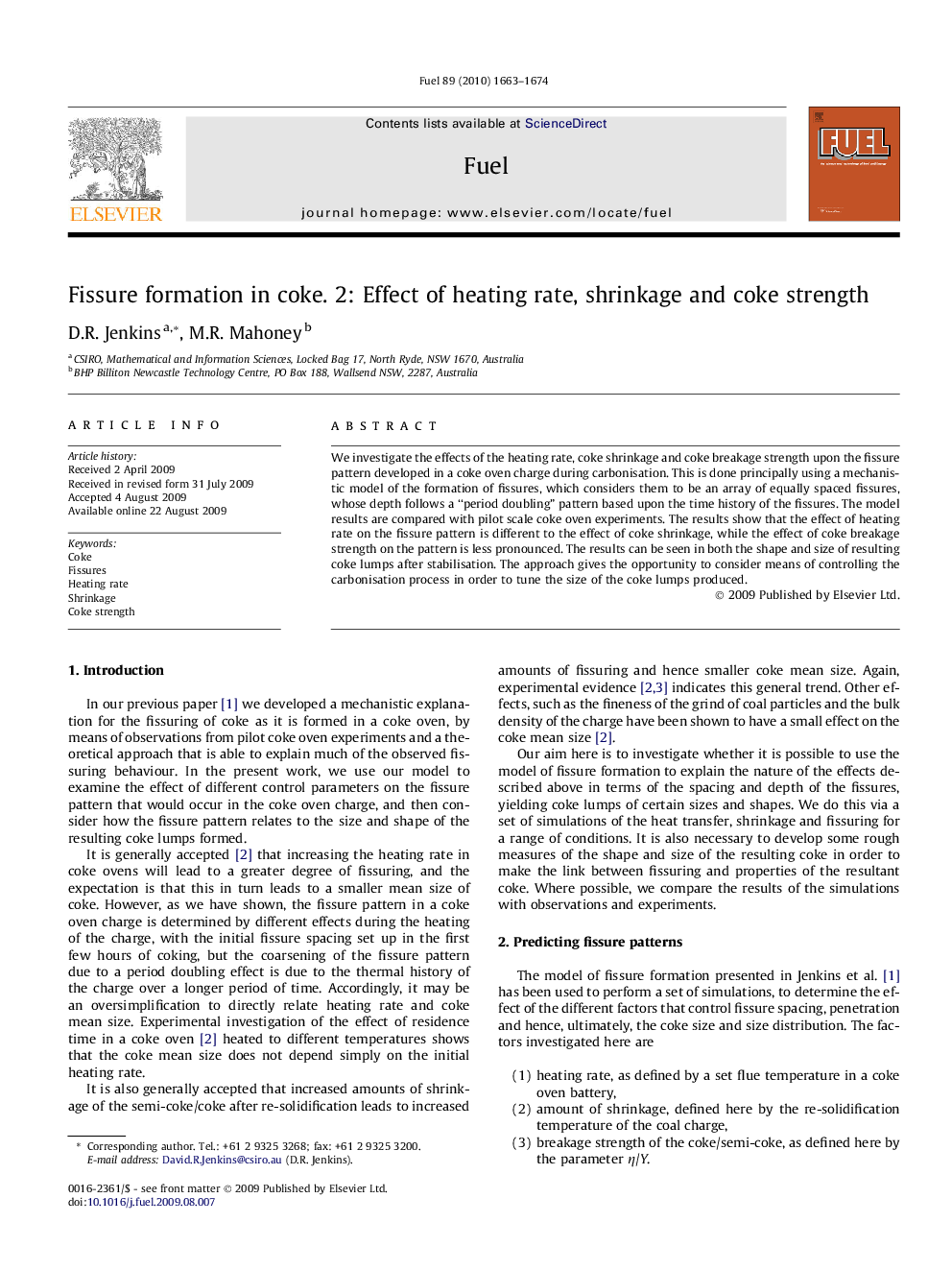| Article ID | Journal | Published Year | Pages | File Type |
|---|---|---|---|---|
| 207346 | Fuel | 2010 | 12 Pages |
We investigate the effects of the heating rate, coke shrinkage and coke breakage strength upon the fissure pattern developed in a coke oven charge during carbonisation. This is done principally using a mechanistic model of the formation of fissures, which considers them to be an array of equally spaced fissures, whose depth follows a “period doubling” pattern based upon the time history of the fissures. The model results are compared with pilot scale coke oven experiments. The results show that the effect of heating rate on the fissure pattern is different to the effect of coke shrinkage, while the effect of coke breakage strength on the pattern is less pronounced. The results can be seen in both the shape and size of resulting coke lumps after stabilisation. The approach gives the opportunity to consider means of controlling the carbonisation process in order to tune the size of the coke lumps produced.
